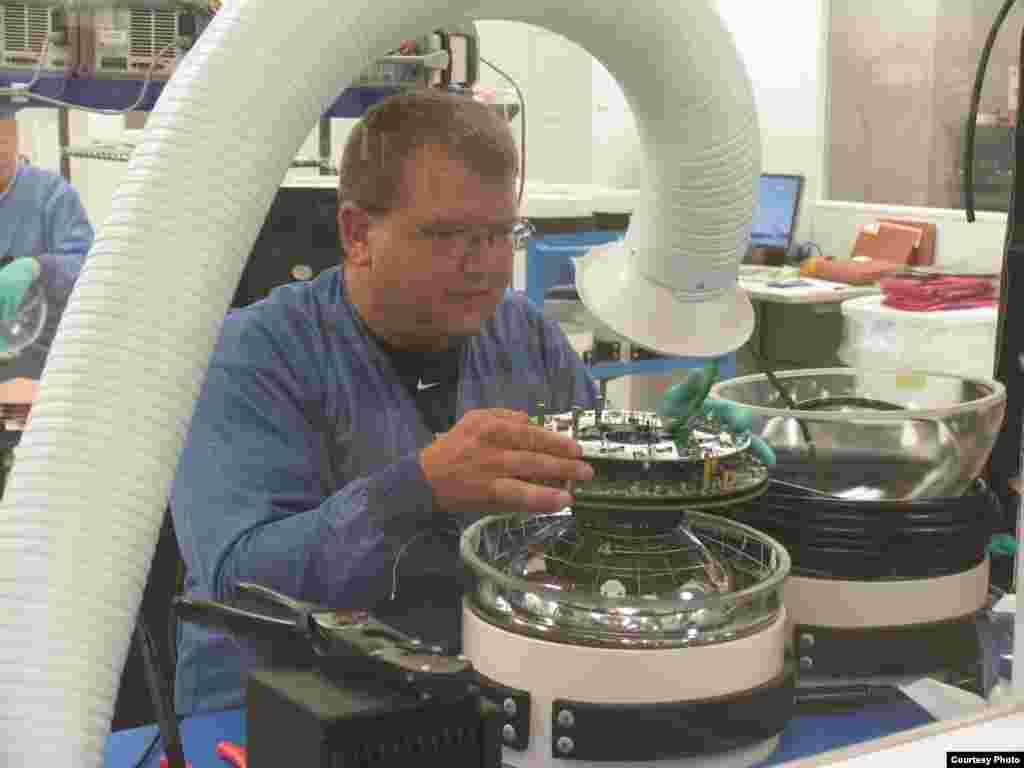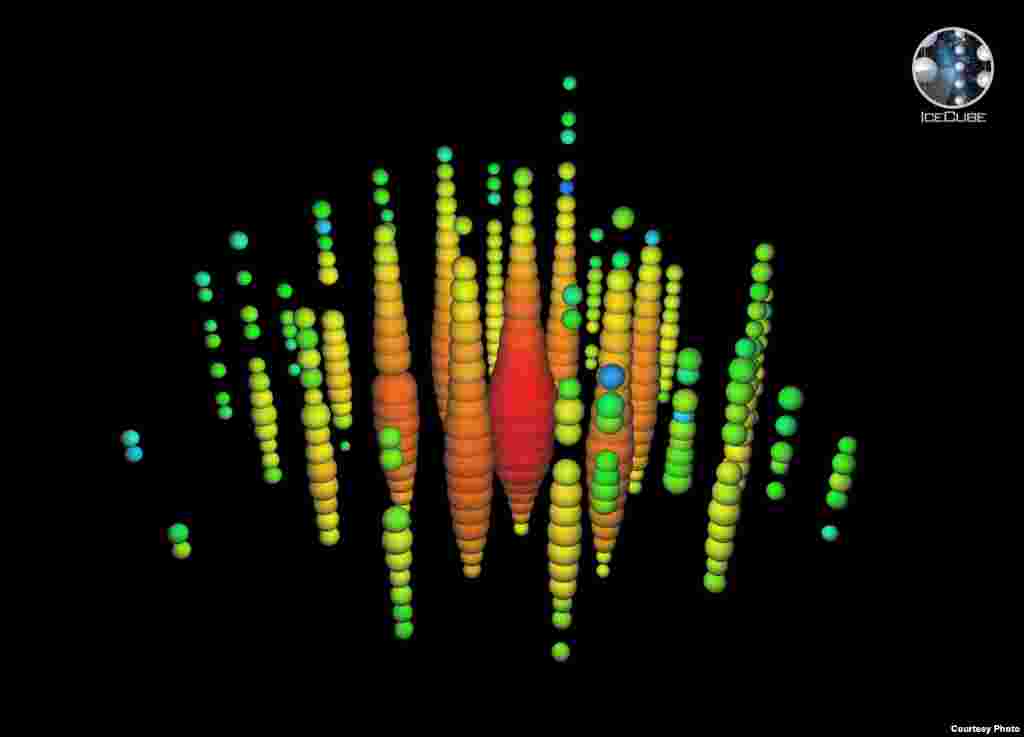Sensors buried deep in the Antarctica ice have detected evidence of high energy particles from outside the solar system. The extraterrestrial discovery could usher in a new age of astronomy and greater understanding of the nature of the universe.
The IceCube Laboratory

5
A technician at the University of Wisconsin-Madison Physical Sciences Lab works on one of the sensors of the IceCube detector. (IceCube/NSF)

6
NSF scientists, engineers and drillers working on the deployment of IceCube in Dec. 2010, signed the last sensor before it was buried 2 kilometers deep in the Antarctic ice. (IceCube/NSF)

7
Members of the IceCube Collaboration before the deployment of the last digital optical module (DOM), installed on Dec. 18, 2010. (Robert Schwarz, NSF)

8
This digital image shows the highest energy neutrino ever observed, with an estimated energy of 1.14 petaelectronvolts (PeV), detected by the IceCube Neutrino Observatory at the South Pole on Jan. 3, 2012. (IceCube Collaboration)




